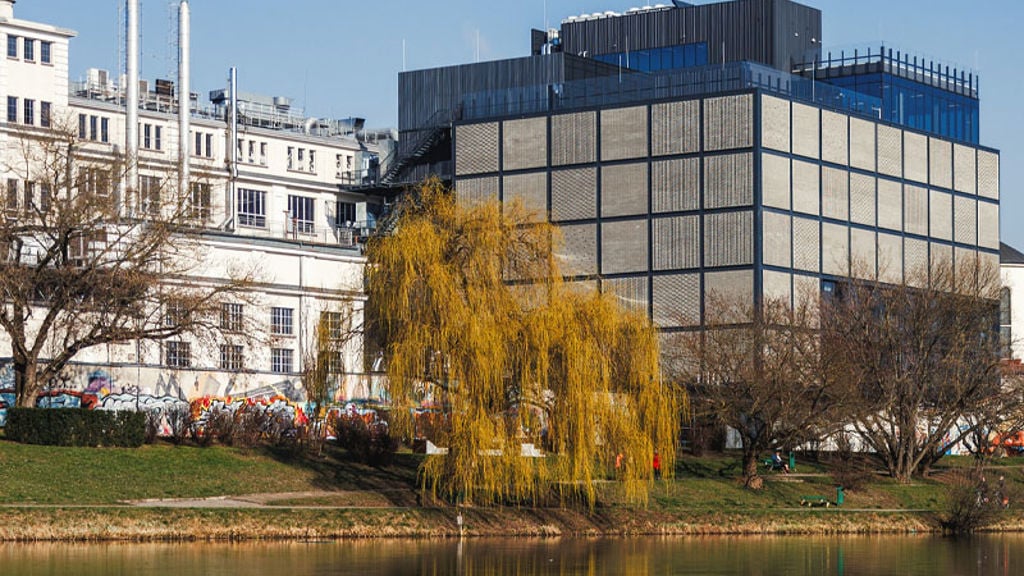New museum celebrates U.S. Olympic and Paralympic athletes through immersive and inclusive design
U.S. Olympic & Paralympic Museum

What we delivered
-
Using AV and acoustics that puts visitors at the heart of the Games' most significant moments
-
Using SoundLab to inform decisions on acoustic mitigation options to reduce the impact of noise on the theatre and other museum spaces
-
Creating a structural system that offers a welcoming façade, which was assembled in parts to allow for easier construction.
Get in touch with our team
Colorado Springs is home to the flagship training centre that draws athletes and tourists alike. The new U.S. Olympic & Paralympic Museum complements the existing facility and brings the historic, inspiring stories of elite American athletes to life.
Working with design architects Diller Scofidio + Renfro, Anderson Mason Dale Architects, structural design collaborator KL&A, and exhibit designers Gallagher & Associates, we provided acoustic, audiovisual, and theatre design services and structural, mechanical, electrical, plumbing, and bridge engineering for the project.
The structural system offers an open, inviting façade to the public and its design evokes dynamic movement. The technology-driven, experiential exhibits invite visitors to explore the Games’ history, understand the arduous journey to the Olympics and Paralympics, feel the weight of competition, and observe the long-lasting impact of the Games on popular culture and media.
Immersive and interactive acoustic and audiovisual design
The acoustic and audiovisual design of the new U.S. Olympic & Paralympic Museum brings the museum to life in a way that leaves a lasting impression. We collaborated with exhibit designers Gallagher & Associates to create exhibits that put visitors at the heart of the action, fully immersing guests in some of the Games’ most poignant moments.
Many U.S. Olympic and Paralympic athletes recall the Parade of Nations during the Opening Ceremony as a key memory. We implemented artfully controlled acoustic design with a 3D sound and projection system to immerse visitors in this awe-inspiring moment. In another exhibit, large-scale projections allow visitors to race against world-class sprinters to experience the speed of the fastest U.S. Olympic and Paralympic athletes.



Inclusive and accessible exhibit and venue design
The project teams carefully considered the inclusivity of the exhibits’ design. From the physical layout to the media content itself, the design accommodates visitors with vision and hearing impairments. The exhibits are also radio frequency identification (RFID) enabled for personalisation. Responding to personal details and preferences, including accessibility needs, the exhibits can store your activities and performance for later access.
The museum features a large multimedia theatre for events, press conferences, and inductions into the U.S. Olympic & Paralympic Hall of Fame. The state-of-the-art theatre features a custom-produced film played on an extra wide edge-blended projection screen with surround-sound audio. Within the theatre, the building’s ramp allows easy navigation by guests in wheelchairs. The seating and sightline plan includes up to 26 seats for wheelchairs, so an entire Paralympic sled hockey team can use the theatre simultaneously.

Circumventing environmental sound through Arup’s SoundLab
The museum is located next to freight rail tracks and a rail yard, so we performed noise and vibration studies to assess the impact of rail movements on the museum. Using the SoundLab, a 3D aural environment, we demonstrated the impact of noise from the rail movements on the theatre and other museum spaces. This enabled museum stakeholders and the design team to make an informed decision on acoustic mitigation options. We decided to isolate the theatre from vibration using a box-in-box construction, like building a room within a room, to minimise noise impacts on the space.
Structure and façade evoke dynamic movement
Working with Diller Scofidio + Renfro, Anderson Mason Dale Architects, and KL&A was a true collaboration which enabled us to create a framework integral to the building form. Our team derived a structural system aligned with the facets of the façade, generating efficient structural action and evoking a sense of movement to celebrate the Olympic and Paralympic Games. A grand cantilevered truss suspends the upper galleries above the entrance to the museum, creating a sweeping clear span and a welcoming and inclusive entrance for visitors. Artful and practical, the façade was transported to site in large pieces to be assembled. The result is a cohesive, integrated vision and a functional solution.
The structure carrying the exterior facade also serves to support the building itself. The benefits of this include eliminating interior columns, ease of future renovation, and reduced construction costs, time, and complexity.

Wave-like pedestrian bridge connecting museum to community
Our structural engineers collaborated with Diller Scofidio + Renfro on the adjacent Southwest Downtown Pedestrian Bridge to connects the museum to the America the Beautiful Park. Called the rip curl for its cresting design, the 250ft footbridge spans active rail lines. The prefabricated bridge was assembled in a staging area and driven into place using self-propelled modular transporters over the course of a single weekend, minimising outage for the rail lines and yard.
Hero image courtesy of James O'Rear. All other images courtesy of Nic Lehoux.
Design architects: Diller Scofidio + Renfro / Exhibit designers: Gallagher & Associates / Structural Engineers: KL&A / MEP Engineers: ME Engineers, The Ballard Group
Projects
Explore more arts and culture projects

Designing a creative outlet and unique venue for Bidi Bidi - transforming cultural life for Africa’s largest refugee settlement
Bidi Bidi Performing Arts Centre, Uganda

Securing the future of a 15th century building in the heart of Yorkshire
York Guildhall, United Kingdom

Advising on the transformation of 1950s silos building into a chocolate museum
E. Wedel Chocolate Factory and Museum, Poland

A space for creativity and community
The Black Library, United States of America
Get in touch with us
If you'd like to speak to one of our arts and culture experts then please get in touch by completing the form.

